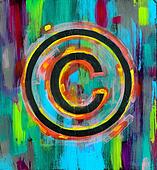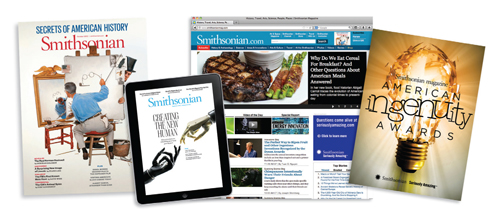 |
| Effective Use of Copyright? |
Lawyers processing applications for
patents before the U.S. Patents and Trademark Office (PTO) sometimes copy
scientific articles from academic journals to help comply with a duty to
disclose "prior art" that bears on the patentability of the
claimed inventions.
Makes sense,
right? AND, even though the articles in the journals are copyrighted (and, in
my opinion, by the wrong people - the academics that performed the research
should hold all rights) this kind of use of copyrighted material properly and
sanely falls within the 'fair use' doctrine set forth in the U.S.
Copyright Act.
BUT --- the
publishers of commercial academic journals (of which I am no fan) think NOT
--- AND have taken these patent processors to court for copyright
infringement.
Guess who's
wining these little publishing dramas?
On second
thought, let's NOT guess. Let's find out in this interesting resource article
from Lexology in
cooperation with ACC (Association of Corporate Counsel) written by Edwin L. Fountain and Jessica D.
Bradley:
Can a patent
application violate the copyright laws?
Recent decisions from two federal district courts have rebuffed
efforts by publishers of scientific journals to claim copyright violations
based on the copying of the publishers' articles for purposes of preparing
patent applications submitted to the U.S. Patent & Trademark Office
("PTO"). While these decisions confirm that copying and distributing
articles in conjunction with preparing patent applications should fall within
the "fair use" exception to copyright infringement, the plaintiff
publishers have indicated their intentions to seek appellate review of the
issue.
Plaintiffs' Allegations
Plaintiffs in the cases are the American Institute of Physics and the publishing houses John Wiley & Sons, Inc. and Blackwell Publishing, Ltd., which produce and distribute scientific journals that contain scholarly articles in several scientific disciplines. (Blackwell Publishing is a subsidiary of John Wiley & Sons.) The defendants are law firms that prosecute patent applications before the PTO as well as foreign patent offices. The law firms downloaded or copied various articles published by the plaintiffs. The firms subsequently submitted copies of those articles to the PTO as evidence of "prior art" in conjunction with applications for patents and distributed copies to their clients, lawyers within the firm working on the applications, and, in some instances, foreign patent attorneys.
In American Institute of Physics and John Wiley & Sons, Inc. v.Schwegman, Lundberg & Woessner, P.A. (D. Minn. Civ. No. 12-528), plaintiffs initially asserted that the law firm engaged in unauthorized copying by submitting copies of the articles to the PTO. The plaintiffs subsequently abandoned that allegation (after the PTO itself intervened in the case on the side of the defendant) and focused their claims on the firm's downloading, storing, internal copying, and distribution of the articles by email. The firms had downloaded 18 articles, most of them from the PTO's own website but others from varied sources. The firm then copied the articles to the firm's document management system, where they were accessible to lawyers in the firm. The publishers asserted that these activities, along with viewing the documents and emailing copies of certain articles to the firm's clients or other attorneys, constituted infringement. On August 30, Judge Richard Kyle of the District of Minnesota entered summary judgment for the defendants, adopting a prior report and recommendation of a magistrate judge.
In two other cases, American Institute of Physics and Blackwell Publishing, Ltd. v. Winstead PC (N.D. Tex. No. 3:12-CV-1230) and John Wiley & Sons, Ltd. and American Institute of Physics v. McDonnell Boehnen Hulbert & Berghoff LLP (N.D. Ill. No. 12 C 1446)—and again, after intervention by the PTO—the plaintiffs similarly amended their complaints to disclaim any allegation of infringement based on submission of copies of copyrighted articles to the PTO, or on retention of file copies of the works submitted to the PTO. Instead, the amended complaints focus on the defendant law firms' unauthorized copying of articles from plaintiffs' journals, including the allegation that the firms charged their clients for the copying and thereby directly profited from its infringement. In Winstead, Judge Barbara Lynn of the Northern District of Texas issued a written decision granting summary judgment for the defendants on December 3. The McDonnell Boehnen case, brought in the Northern District of Illinois, is currently still in the discovery stage.
A fourth case, John Wiley & Sons, Inc. and American Institute of Physics v. Hovey Williams LLP (D. Kan. No. 5:12-cv-4041), was voluntarily dismissed after the defendant took a license from the Copyright Clearance Center.
The Fair Use Defense
The defendants in these cases invoked the fair use doctrine set forth in the U.S. Copyright Act. The Copyright Act provides that copyright infringement occurs when a person copies or distributes a copyrighted work without authorization. The Act also provides, however, that certain uses of copyrighted material are "fair use" and thus do not constitute infringement. The Act lists several examples of fair use, including "criticism, comment, news reporting, teaching[,] or research," and then goes on to set forth four nonexclusive factors for determining whether a particular use of copyrighted material is fair use:
Plaintiffs' Allegations
Plaintiffs in the cases are the American Institute of Physics and the publishing houses John Wiley & Sons, Inc. and Blackwell Publishing, Ltd., which produce and distribute scientific journals that contain scholarly articles in several scientific disciplines. (Blackwell Publishing is a subsidiary of John Wiley & Sons.) The defendants are law firms that prosecute patent applications before the PTO as well as foreign patent offices. The law firms downloaded or copied various articles published by the plaintiffs. The firms subsequently submitted copies of those articles to the PTO as evidence of "prior art" in conjunction with applications for patents and distributed copies to their clients, lawyers within the firm working on the applications, and, in some instances, foreign patent attorneys.
In American Institute of Physics and John Wiley & Sons, Inc. v.Schwegman, Lundberg & Woessner, P.A. (D. Minn. Civ. No. 12-528), plaintiffs initially asserted that the law firm engaged in unauthorized copying by submitting copies of the articles to the PTO. The plaintiffs subsequently abandoned that allegation (after the PTO itself intervened in the case on the side of the defendant) and focused their claims on the firm's downloading, storing, internal copying, and distribution of the articles by email. The firms had downloaded 18 articles, most of them from the PTO's own website but others from varied sources. The firm then copied the articles to the firm's document management system, where they were accessible to lawyers in the firm. The publishers asserted that these activities, along with viewing the documents and emailing copies of certain articles to the firm's clients or other attorneys, constituted infringement. On August 30, Judge Richard Kyle of the District of Minnesota entered summary judgment for the defendants, adopting a prior report and recommendation of a magistrate judge.
In two other cases, American Institute of Physics and Blackwell Publishing, Ltd. v. Winstead PC (N.D. Tex. No. 3:12-CV-1230) and John Wiley & Sons, Ltd. and American Institute of Physics v. McDonnell Boehnen Hulbert & Berghoff LLP (N.D. Ill. No. 12 C 1446)—and again, after intervention by the PTO—the plaintiffs similarly amended their complaints to disclaim any allegation of infringement based on submission of copies of copyrighted articles to the PTO, or on retention of file copies of the works submitted to the PTO. Instead, the amended complaints focus on the defendant law firms' unauthorized copying of articles from plaintiffs' journals, including the allegation that the firms charged their clients for the copying and thereby directly profited from its infringement. In Winstead, Judge Barbara Lynn of the Northern District of Texas issued a written decision granting summary judgment for the defendants on December 3. The McDonnell Boehnen case, brought in the Northern District of Illinois, is currently still in the discovery stage.
A fourth case, John Wiley & Sons, Inc. and American Institute of Physics v. Hovey Williams LLP (D. Kan. No. 5:12-cv-4041), was voluntarily dismissed after the defendant took a license from the Copyright Clearance Center.
The Fair Use Defense
The defendants in these cases invoked the fair use doctrine set forth in the U.S. Copyright Act. The Copyright Act provides that copyright infringement occurs when a person copies or distributes a copyrighted work without authorization. The Act also provides, however, that certain uses of copyrighted material are "fair use" and thus do not constitute infringement. The Act lists several examples of fair use, including "criticism, comment, news reporting, teaching[,] or research," and then goes on to set forth four nonexclusive factors for determining whether a particular use of copyrighted material is fair use:
1.
The purpose and character of the use, including whether such use is of a
commercial nature or is for nonprofit educational purposes;
2.
The nature of the copyrighted work;
3.
The amount and substantiality of the portion used in relation to the
copyrighted work as a whole; and
4.
The effect of the use upon the potential market for or value of the copyrighted
work.
Because a finding that a use is "fair" depends upon an after-the-fact judicial balancing of these and other factors, the Supreme Court has insisted that a fair-use analysis may not "be simplified with bright-line rules, for the statute, like the doctrine it recognizes, calls for case-by-case analysis." Campbell v. Acuff-Rose Music, Inc., 510 U.S. 569, 577 (1993).
The Defendants' and the PTO's Arguments

